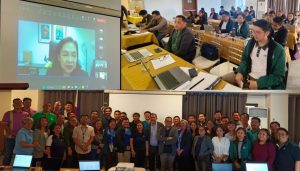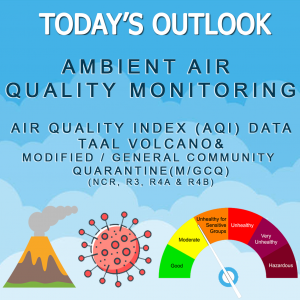
The Environmental Management Bureau of the Department of Environment and Natural Resources (EMB-DENR) conducted the Airshed Capacity Building in Emission Inventory and Air Quality Monitoring Training Workshop to equip technical staff from the regional offices with the advanced skills to perform emission inventory and air quality monitoring. This capacity building of EMB technical workforce is necessary to support the country’s commitment to cleaner air and improved air quality management practices.
The training workshop, held on October 14 to 18, 2024, in Quezon City, aims to improve air quality standards and categorize airsheds as either attainment or non-attainment zones using eco-profiling and scientific studies.
This initiative focuses on designating airsheds across regions, aligned with the mandates of the Philippine Clean Air Act of 1999 or Republic Act 8749, specifically Section 8 on Air Quality Control Action Plans.
Airsheds are determined by areas with shared climate, meteorology, and topology, all of which influence the dispersion of pollutants and reflect common development goals and environmental challenges.
EMB Assistant Director Esperanza Sajul underscored the training’s objectives to bolster regional capabilities in air quality monitoring. “This capacity-building endeavor supports EMB’s mandate to uphold every Filipino’s right to a balanced and healthy environment,” she said.
During the workshop, the participants reviewed and assessed both regular and geothermal airsheds nationwide, shared accomplishments within their regions, and examined the current guidelines for designating attainment/non-attainment (A/NA) areas within an airshed.
Technical experts from EMB and resource speaker Jean-Marc Andre of CITEPA (International Expert Centre on Air Pollution and Climate Change), recognized as an expert in estimating emissions from the transport sector for inventory applications and spatialized emissions studies presented policies and protocols on Ambient Air Quality Monitoring and Air Dispersion Modeling.
Through hands-on exercises, the participants were taught to identify emission sources, collect relevant data, and calculate emission rates. They were also trained in air dispersion modeling to predict pollutant dispersion patterns, which is crucial for assessing potential environmental impacts in affected areas.
These skills are expected to enhance the ability of EMB’s Regional Offices to make more informed decisions regarding air quality management, fostering a healthier environment for communities throughout the Philippines.
This initiative reinforces EMB’s commitment to environmental stewardship and its continuous drive to empower regional offices, ensuring a unified, effective approach in the nation’s fight for cleaner air. ###




















